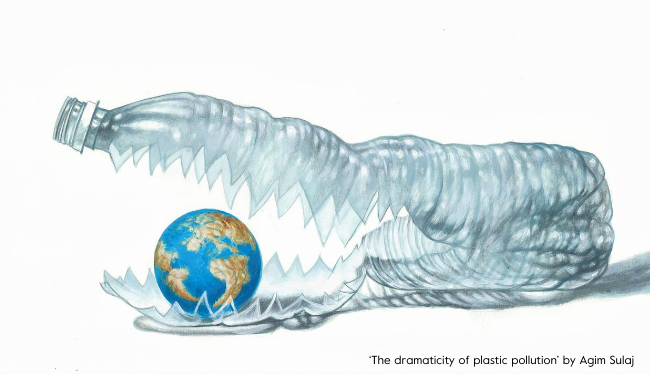A Look at Political Cartoons: Then and Now
Since the onset of free press, cartoons have served as its more daring compliment. Here is a run through of some of the earliest to some more recent icons that have made a significant contribution to this indispensable form of communication and art.
by Claire Davenport
The first cartoon appeared in Ben Franklin’s newspaper The Pennsylvania Gazette on May 9, 1754. While the medium, woodcut, and the image are fairly simple, the message is clear and directly takes on the absence of unity between the American colonies at the time.
It was believed that a snake would resurrect if its severed parts were reunited before the stroke of midnight, and this cartoon plays on that superstition. It was reprinted and reproduced several times throughout American history and continues to appear in history books today.
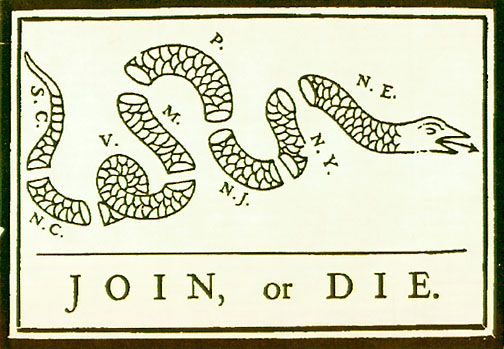
Using grease crayon on wax paper, Robert Minor drew ‘At Last a Perfect Soldier’ for the left-wing monthly The Masses in 1916. Minor was reputed as one of the best cartoonists in the U.S. and was hired by several major publications at the time including the New York Call as a both a cartoonist and war correspondent.
His journalistic career led him to join the American Communist Party with which he had brief success as the acting General Secretary in 1941. The cartoon below was shunned by the polite classes and eventually the U.S. Post Office refused to deliver any versions of it, claiming that it violated the Espionage Act. The Masses was eventually shut down after a legal battle surrounding this image. Anti-American is likely just how it was perceived and how the times have not changed much.
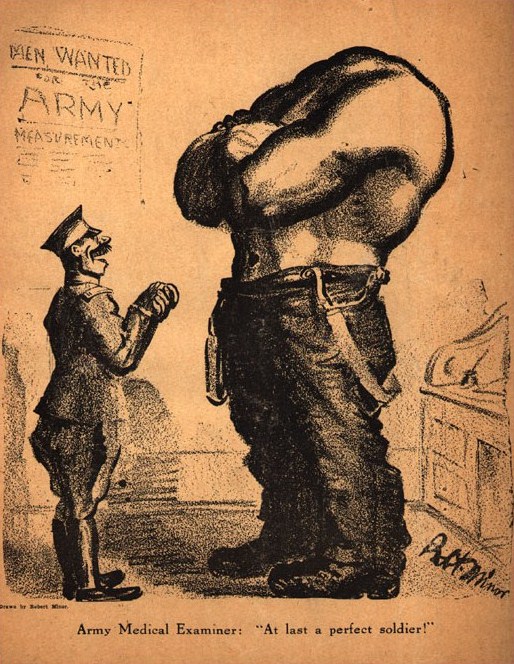
Another arguably enduring image of then and now is that of William Hogarth’s ‘Gin Lane’ which at the time of print in 1751 was used in support of a government crackdown on gin consumption after it was tied to a rise in criminality and social unrest.
The image was etched from copperplates which can now be viewed at the Metropolitan Museum in New York. A second image called ‘Beer Street’ was supposed to predate ‘Gin Lane’ and conversely showed its inhabitants in rude health as a result of drinking its notably home-brewed beer.
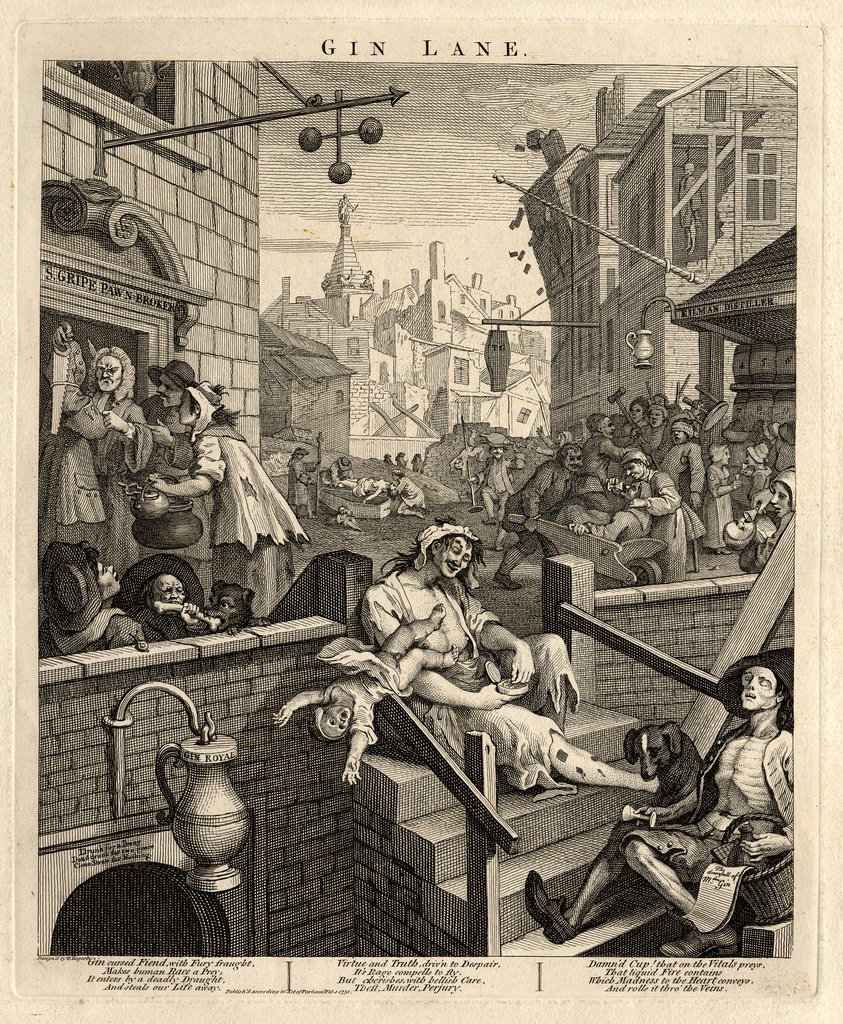
A man who can be widely credited with popularising both a style of drawing and the presence of cartoons in the press is Herbert Lawrence Block known as Herblock. His cartoons were so unapologetic that one of his most widely-known, ‘Here He Comes Now,’ depicting a pre-presidential Richard Nixon crawling out of a sewer, had the politician cancel his subscription to The Washington Post in 1954.
Herblock is the most decorated of all cartoonists having won the Pulitzer three times for his cartoons and sharing a fourth with the editorial team who worked to uncover Watergate.
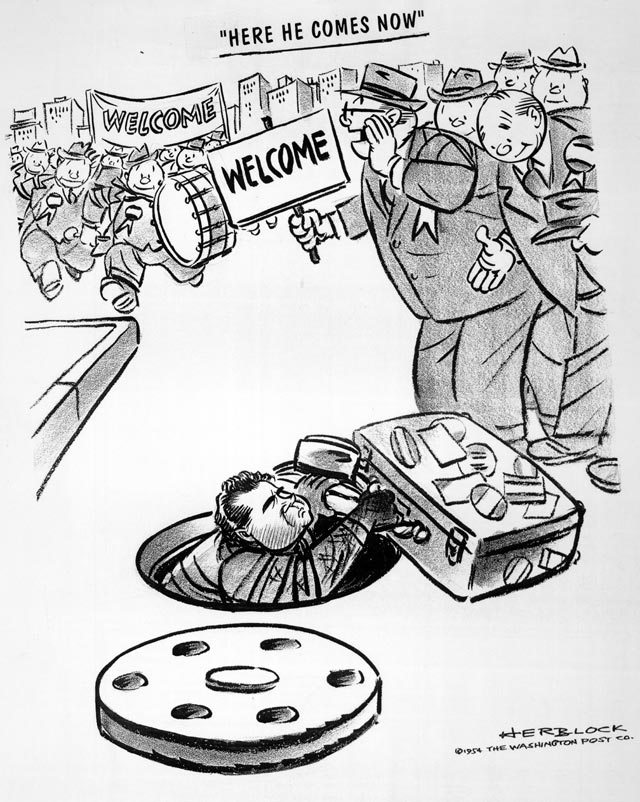
Herblock’s highly stylised cartoons paved the way for a generation of acerbic and stylised cartoonists to come. Many were also terribly funny.
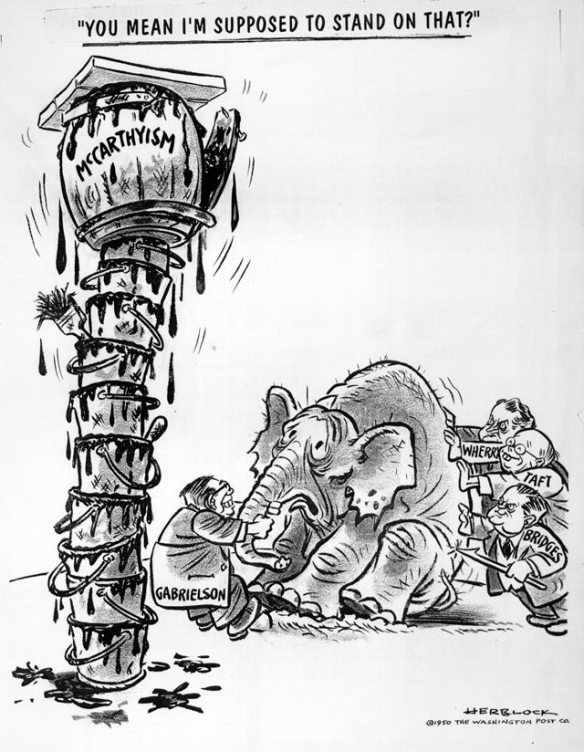
In this cartoon the Republican elephant is being dragged to balance on a tar and smear campaign launched to expose so-called communists. With this cartoon Herblock managed to coin the term McCarthyism which will long continue to outlive him.
Like most editorial jobs, cartooning is also disproportionately populated by men. Signe Wilkinson, a cartoonist who tackles gender equality in addition to the usual news diet, was the first woman to win the Pulitzer Prize for editorial cartooning.
She began her career at the San Jose Mercury News and then moved to the Philadelphia Daily News. Since then she has published several books of her cartoons including one called ‘Abortion Cartoons on Demand.’ Below are two of recent pieces.
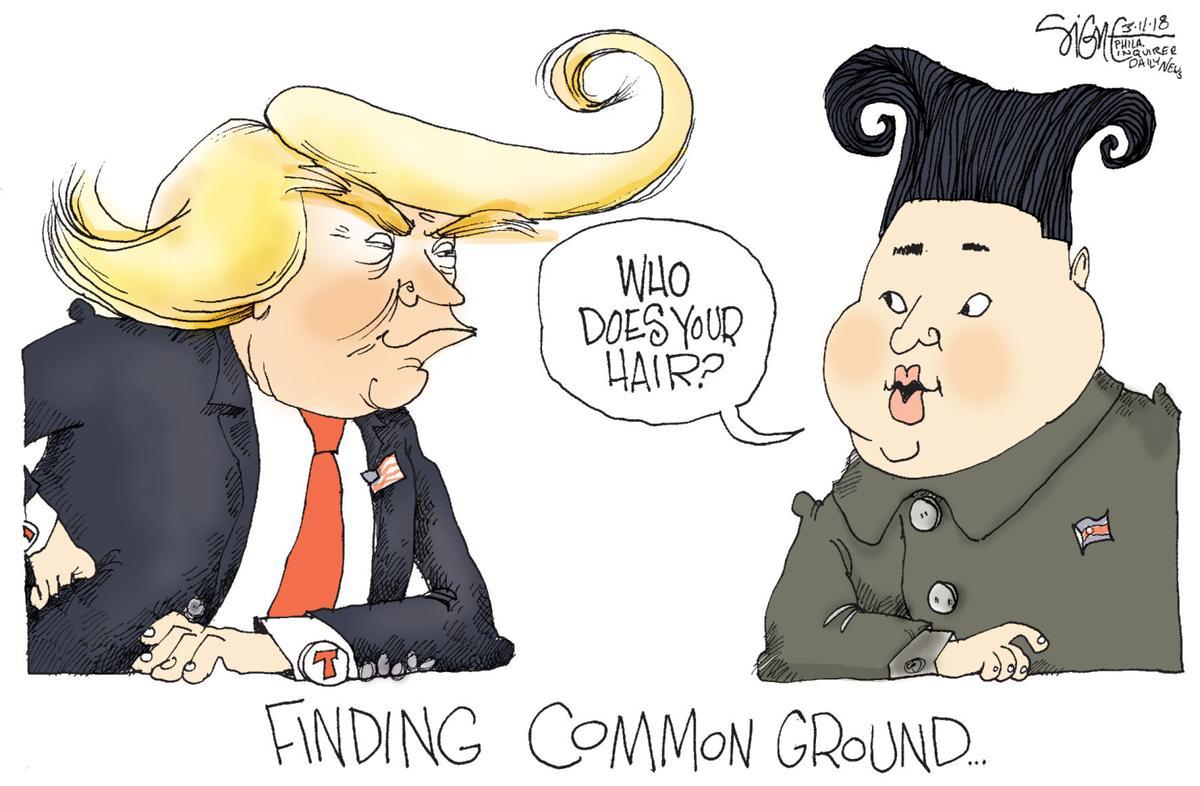
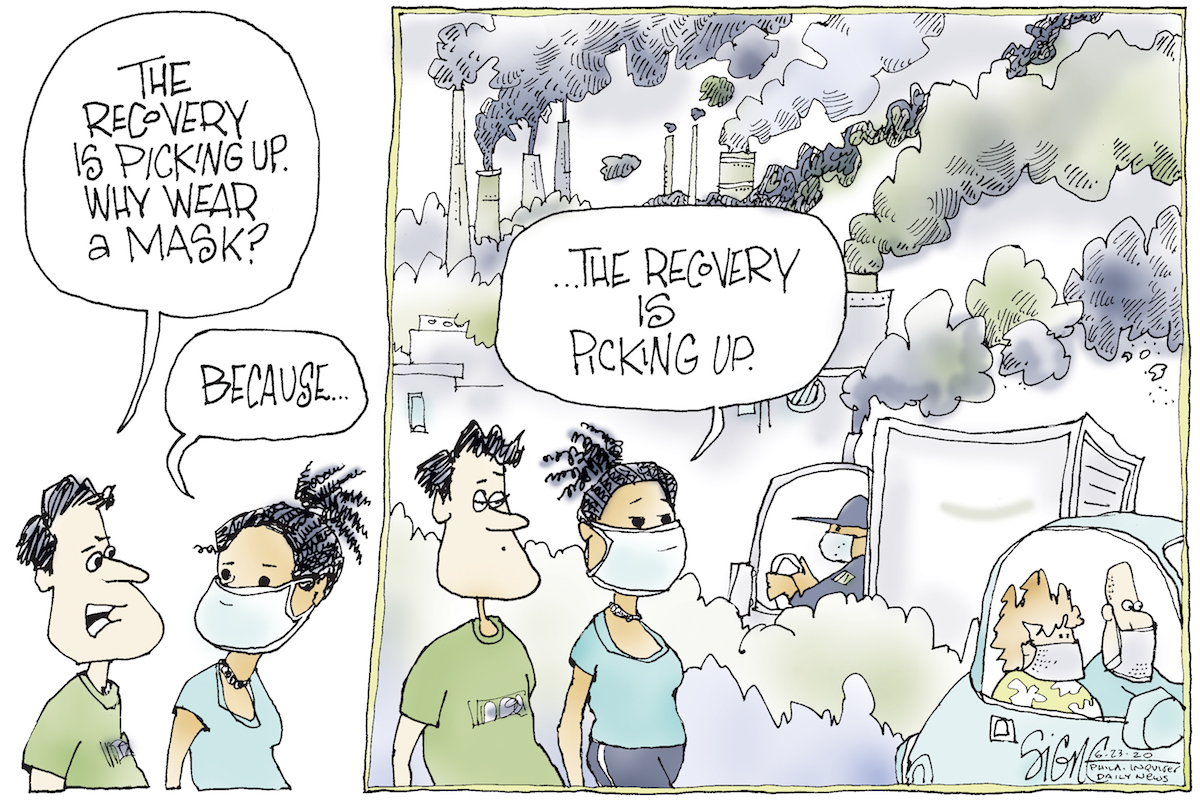
Male, female or any other gender for that matter, an article about cartoons cannot leave out those who have been killed as a direct result of their work. On Jan. 7, 2015 two Al Qaeda gunmen opened fire in the office of the satirical French magazine Charlie Hebdo renowned for courting controversy with its covers. The gunmen killed 12 people, among them five staff cartoonists, and injured 11.
The incident happened shortly after Hebdo had published a series of covers depicting the Prophet Muhammad which in itself drew criticism as Muslims are taught that both Allah and by that token the Prophet cannot be depicted by the human hand. As a result the practice of drawing either is believed to be insulting, certainly by the more devout. Here is just one of those enduring images in that collection.
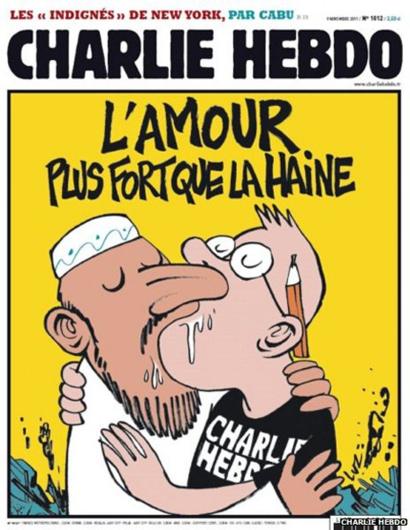
The Charlie Hebdo is perhaps the most famous incident in the recent history of silencing cartoonists, but certainly not the only one. This year the European Press Prize shortlisted 16 cartoonists who expressed profound observations through their cartoons such as the Vatican’s avoidant culture and the effects of climate change. One of ur nominees, Turkish cartoonist Halit Kurtulmuş had his cartoon ‘World Politics’ censored by another contest it was nominated for, despite being one of the finalists.
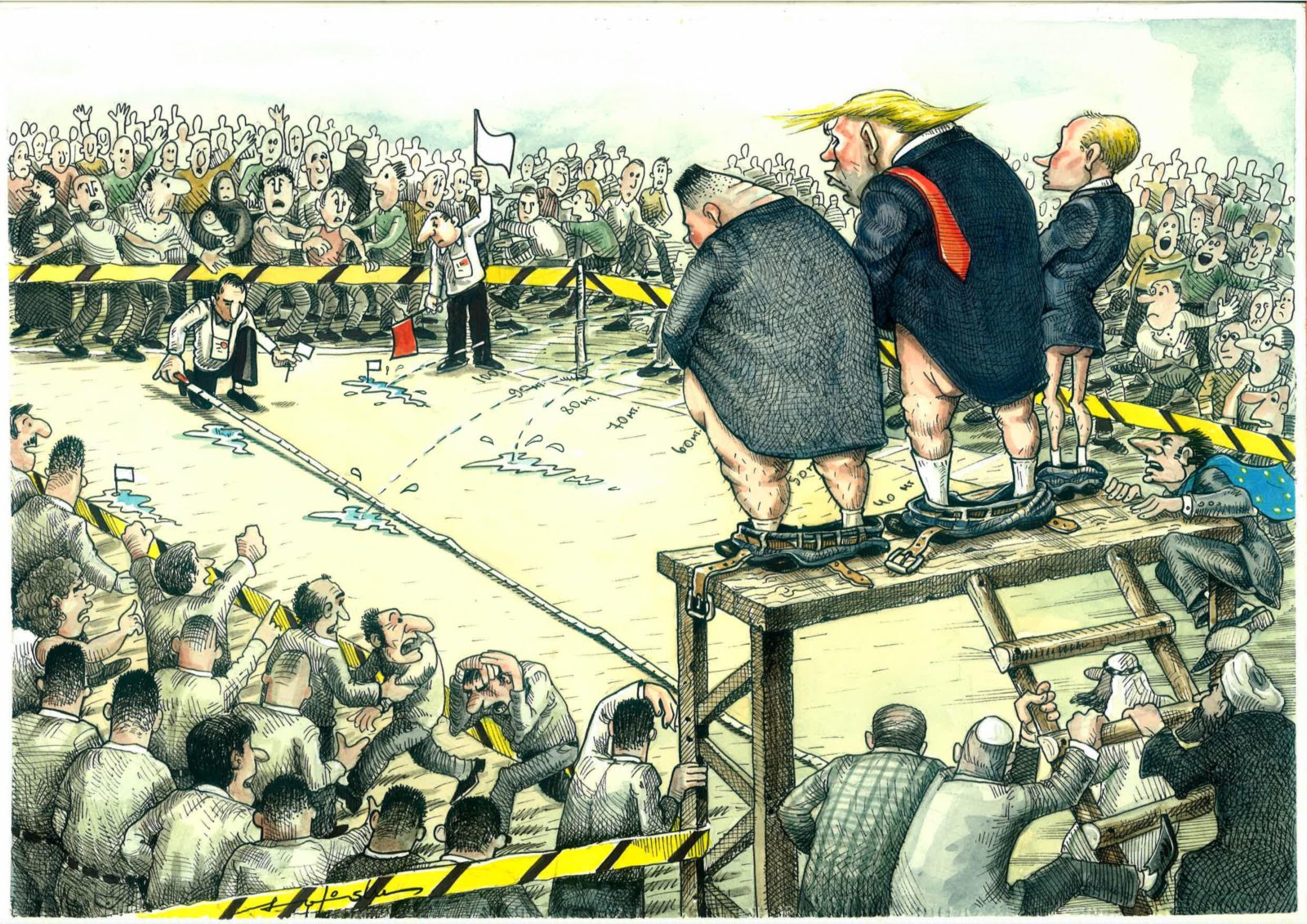
“Censorship is one of the biggest problems for a cartoonist,” Kurtulmuş said. “It is very sad, because this situation is seen in many countries of the world including my own.”
See the full shortlist for the European Cartoon Award here.
Summer 2020 Funds for Journalists
Journalism isn’t easy at the best of times, let alone with the onset of the pandemic. Freelance journalists are hardest hit without the backing of furlough schemes or the assurance that income streams will stabilise soon. For those wishing to get back to work or to report on the pandemic’s impact specifically, we have compiled a list of eligible funding sources. Photo: Geraldine Lewa
by Claire Davenport
New applicants to the Pulitzer Center’s International Reporting Grant are advised that applications surrounding the pandemic will be prioritised at this point in time. Funding has spanned from $5,000 to $10,000 and is paid in two installments, the latter upon submission. Importantly applicants must have the verifiable support of a reputable media outlet in order to apply.
The Fund for Investigative Journalism has set a deadline for Sep. 14, 2020 for its next batch of applications. It accepts applications three to four times a year and, like the Pulitzer Center, a letter of approval from a news outlet is also expected to ensure the piece of work has potential to run, in print or on air. Funding can also reach up to USD $10,000.
The International Women’s Media Foundation is extending its funding to journalists of all genders who find themselves in need of emergency support such as medical or legal aid, replacing destroyed equipment among other lifelines. The fund will also cover those struggling to report in the “highly charged political unrest and polarization in the U.S., including but not limited to elections, civil movements and other challenging environments.” This particular fund is called the United States Journalism Emergency Fund and is eligible to those residing stateside.
Separately funding exclusively for female journalists continues under the rolling IWMF Emergency Fund, but another fund set up for those who have lost work during the Covid-19 pandemic appears to have been exhausted for the time being.
“If you are submitting an application to the Journalism Relief Fund, please know that we have exhausted the available funding and are unable to meet new requests at this time.”
If you would like some reassurance that your query will be answered in a reasonable amount of time, then the National Geographic’s Covid-19 Emergency Fund offers a hopeful two-week turnover.
The funding is aimed at local journalists trying to reach local communities on the Covid-19 pandemic and prioritises places with an underserved populace. The application expresses interest in “local or even hyper-local distribution models,” and funding can run from USD $1,000 to $8,000. The criteria welcomes a slew of storytellers from cartographers to filmmakers.
“Narratives around the Pandemic necessarily include facts and numbers, but ultimately, must also go deeper—telling the stories of inequities that COVID-19 has brought to light.”
Any reporters who feel unsafe as a result of their reporting can approach Reporters Respond, a funding tool set up by Free Press Unlimited for an outlet or journalist suffering from “harassment, intimidation or violence.” The criteria includes online harassment and the funding can cover a swathe of needs from medical to psychological assistance.
If life’s administration has reached a tipping point such as falling behind on payments for housing, medical assistance or your children’s needs the Journalists’ Charity located in Surrey provides near immediate support to eligible candidates.
The Charity’s webpage also links to a selection of other funding resources that prioritise the promotion of diversity for instance or journalists who are writing about violence against women.
The Society of Authors also provides emergency funding up to £2,000 to those hardest hit by the pandemic including writers, illustrators, literary translators, scriptwriters, poets, journalists. Applicants must reside in the UK and must show that a substantial amount of their annual income relates to their writing and/or illustration activities.
The Society of Environmental Journalists is awarding grants for stories on “climate or conservation in North America, water quality and availability in the United States Mississippi River Basin, including agriculture, food, water and sustainability, oceans and coasts globally, including fisheries, sea-level rise and coastal restoration.”
There is no deadline and funding can be up to $,2500 per individual or $5,000 for “team or news outlet projects.”
And while the NUJ also provides discretionary funding, it appears that funding is not granted until all other potential pots have been exhausted and is ineligible to non-card carrying members or recipients of state benefit.
The IJ4EU (Investigative Journalism for Europe) fund launched a new call for applications to its Investigation Support Scheme on August 10, with around €400,000 available to assist cross-border journalistic projects in the European Union and EU candidate countries.
Journalismfund.eu is another valuable organisation which has for over 20 years linked journalists to different grants. On their website you can find a list of grants as well as projects they have supported in the past. Visit journalismfund.eu to find out more about how they connect donors and journalists in order to facilitate cross-border investigative journalism.

